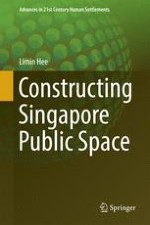2017 | OriginalPaper | Buchkapitel
2. The State, People and the History of Urban Public Space in Singapore
verfasst von : Limin Hee
Erschienen in: Constructing Singapore Public Space
Verlag: Springer Singapore
Aktivieren Sie unsere intelligente Suche, um passende Fachinhalte oder Patente zu finden.
Wählen Sie Textabschnitte aus um mit Künstlicher Intelligenz passenden Patente zu finden. powered by
Markieren Sie Textabschnitte, um KI-gestützt weitere passende Inhalte zu finden. powered by
